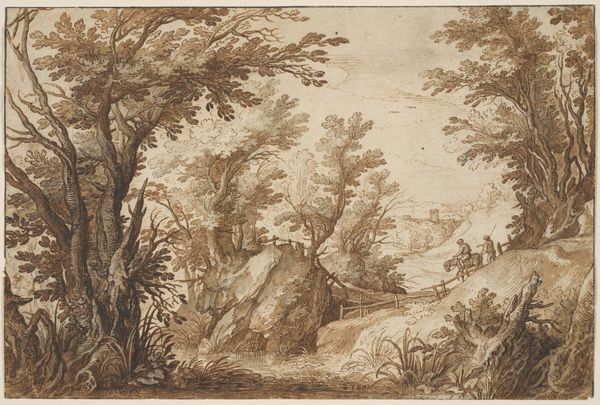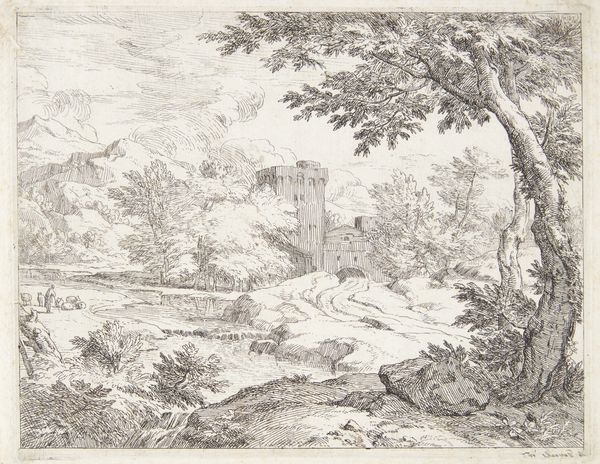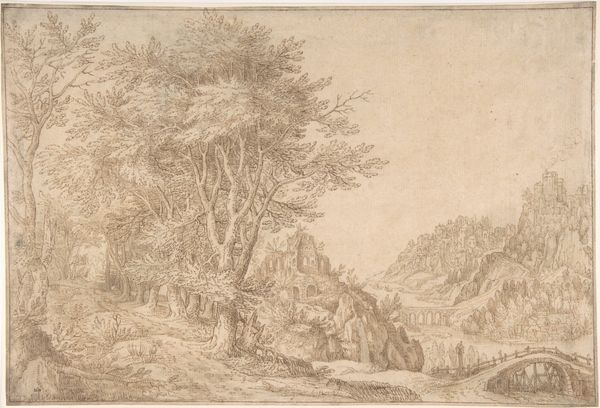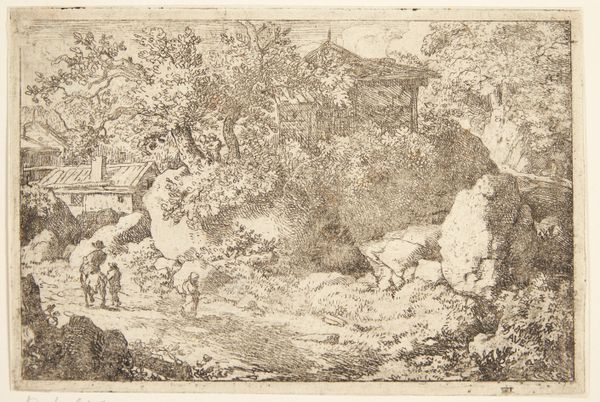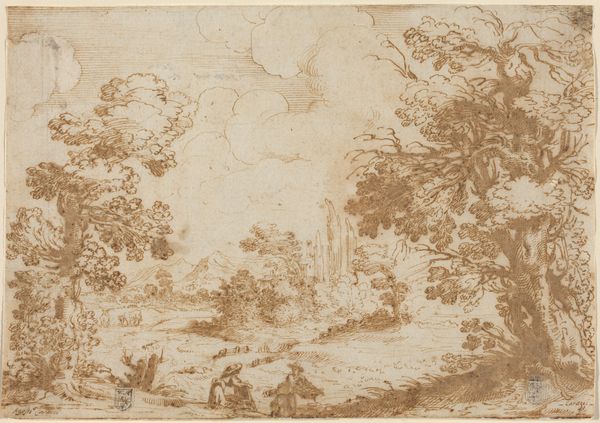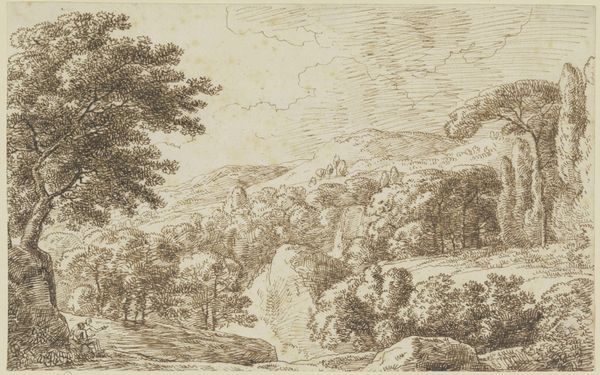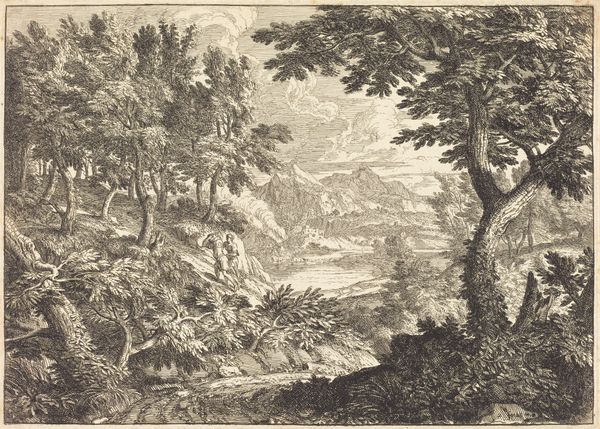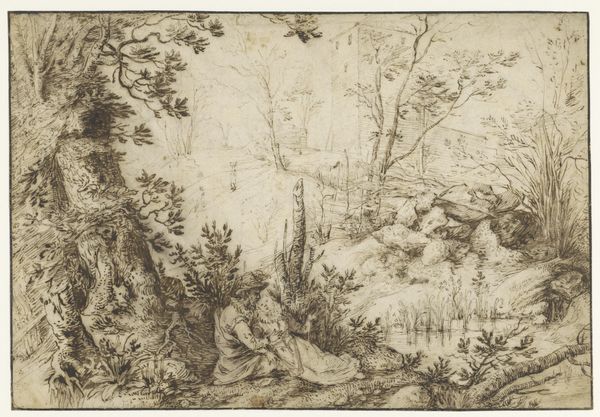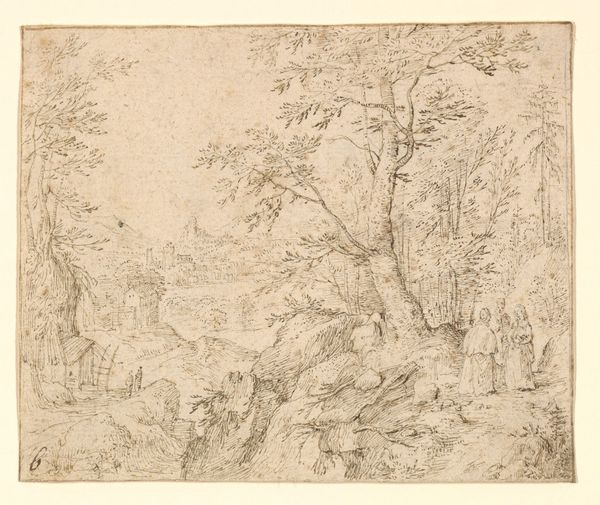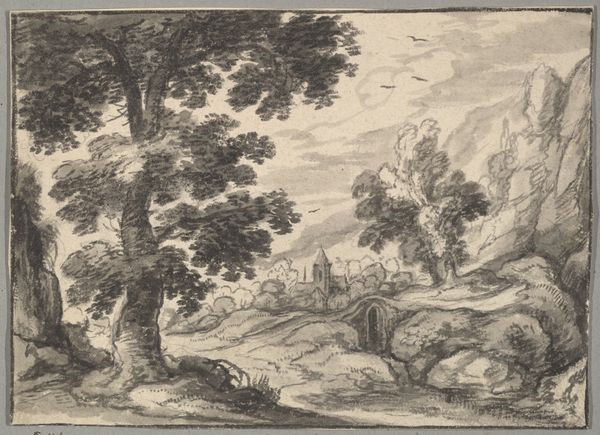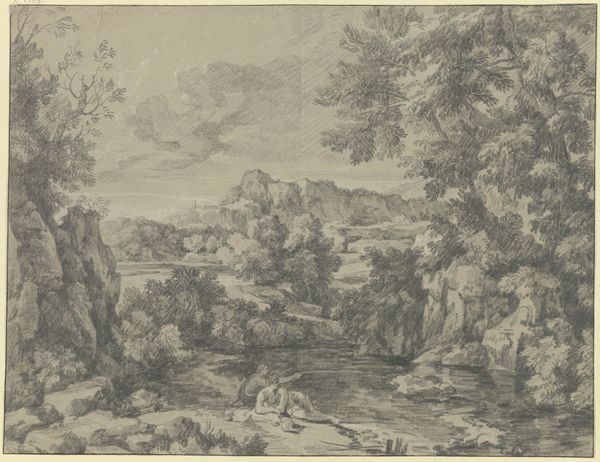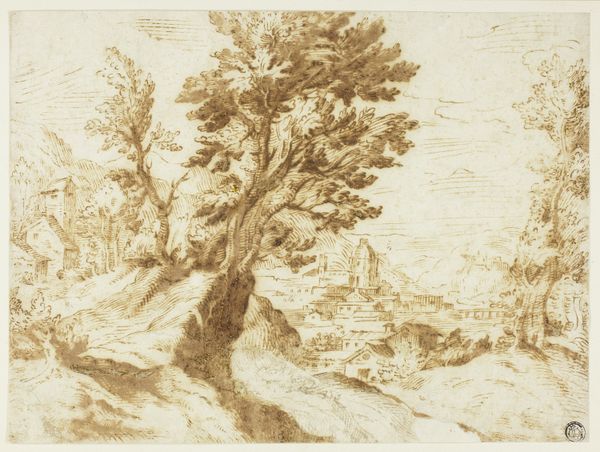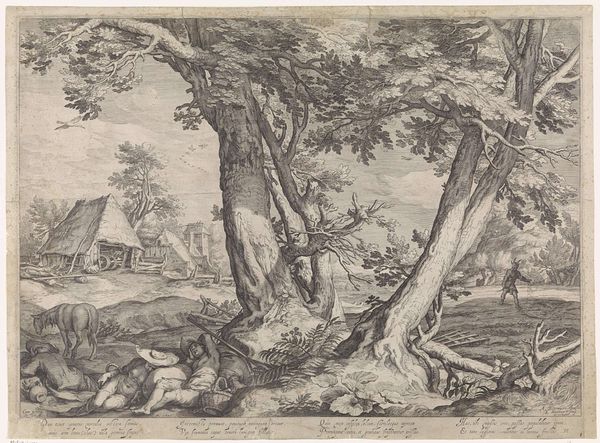
Landscape with Figure Reclining and Figure Fishing 1600 - 1700
0:00
0:00
drawing, print, etching
#
drawing
#
baroque
#
ink painting
# print
#
etching
#
landscape
#
figuration
Dimensions: 7-11/16 x 10-5/8 in. (19.5 x 27 cm)
Copyright: Public Domain
Editor: This is an etching titled "Landscape with Figure Reclining and Figure Fishing," dating back to sometime in the 17th century. It's an ink drawing. What I notice first is how the landscape almost dwarfs the figures. How do you interpret this work? Curator: I see a representation steeped in the social dynamics of its time. Ask yourself, who has the privilege of leisure in such a landscape, and who might be absent? We see figures fishing, a scene seemingly idyllic, yet consider the ecological context: Who had access to these resources? Editor: That’s a really interesting perspective. I was focusing on the purely aesthetic elements, but your questions open up a different view entirely. Is there a social commentary here? Curator: Perhaps. This landscape could be read as a site of labor, obscured by a picturesque veneer. The act of fishing, a means of survival for some, is rendered here as a recreational activity, suggesting a social stratification. How might land ownership influence our reading? Editor: So you’re suggesting that what appears to be just a landscape scene is actually reflecting social inequalities present at that time? Curator: Exactly. Think about the historical context: burgeoning colonialism, enclosure movements. These shaped both the physical and social landscape. We must ask whose story is *not* being told in this seemingly peaceful scene? Editor: That makes me see it very differently. I had never considered those angles when looking at older art like this. Curator: That’s the power of contextualizing art! It encourages us to consider art’s relationship to the power structures, the disenfranchised voices of the era, and the continuing impact on ecological and social relationships today. Editor: Thank you. Now I have a totally different outlook when analyzing art. Curator: Indeed, it reveals hidden narratives and connects historical works to current issues.
Comments
No comments
Be the first to comment and join the conversation on the ultimate creative platform.
